Batcombe House: The 'essential Somerset garden' with a gloriously wild display of flowers, a relaxed atmospheric landscape and an unexploded WW2 shell in one of the borders
When Libby Russell moved to Batcombe House, Somerset, it was the countryside with which she fell in love. Over the past 17 years, she has taken cues from that landscape to create a garden that is entirely at home in its setting. Natasha Goodfellow reports. with photographs by Eva Nemeth.

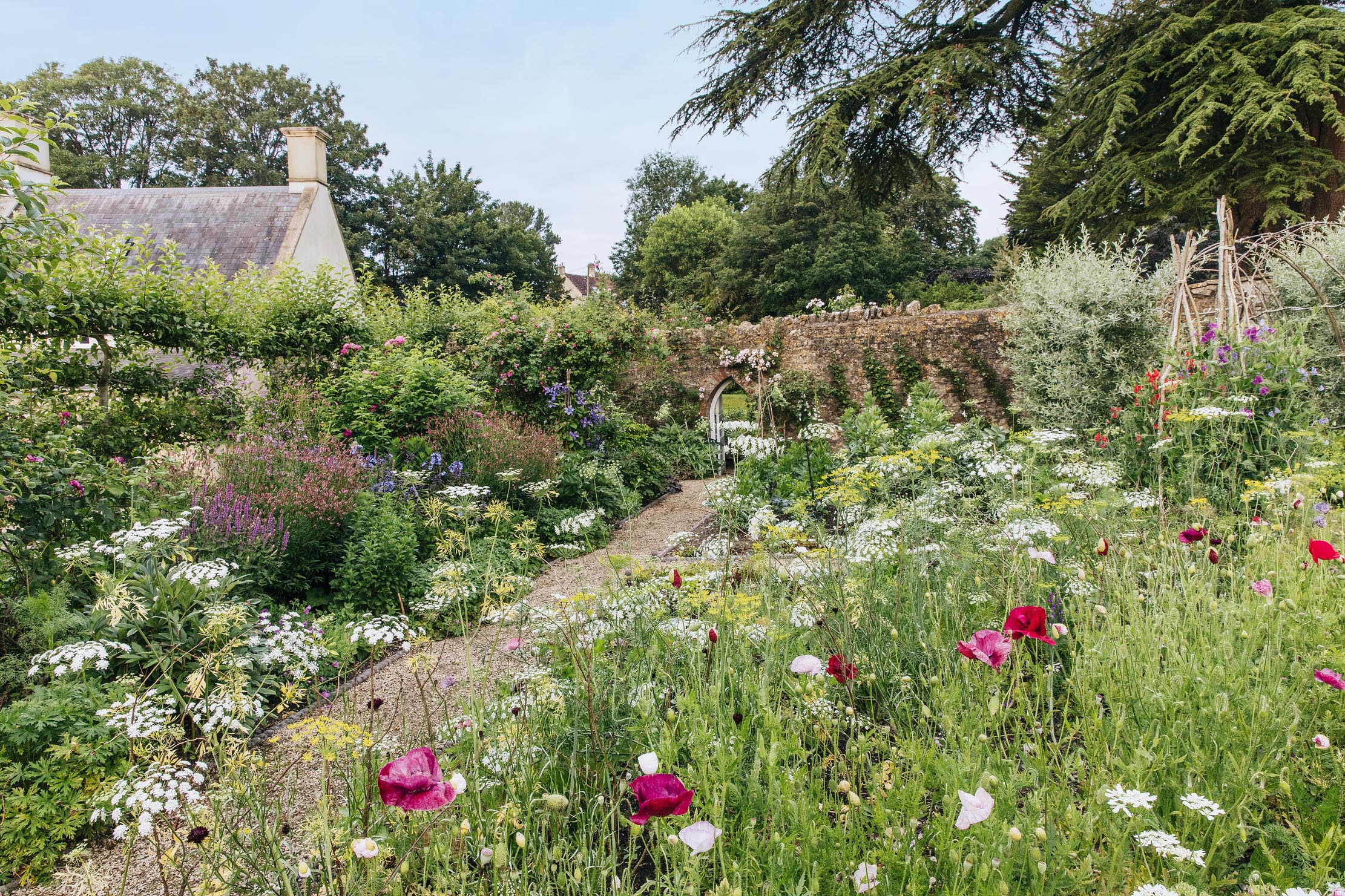
As a niece of the 10th Duke of Rutland, Libby Russell is no stranger to beautiful landscapes.
Born Elizabeth Manners, she grew up on the Belvoir estate in Leicestershire and at Haddon Hall in Derbyshire and it was this sense of the beauty of her surroundings — an amalgamation of the light, the views and the colour of the stone particular to a place — that she and her husband, Alexander Russell, were searching for when they began looking to relocate in about 2001.
‘We’d been living near the coast in Kent,’ says Mrs Russell, one half of Mazzullo + Russell Landscape Design, ‘but the land there was very flat and trees struggled to grow. I wanted to find beautiful natural countryside, not too far from London, which we could afford and that I could fall in love with.’
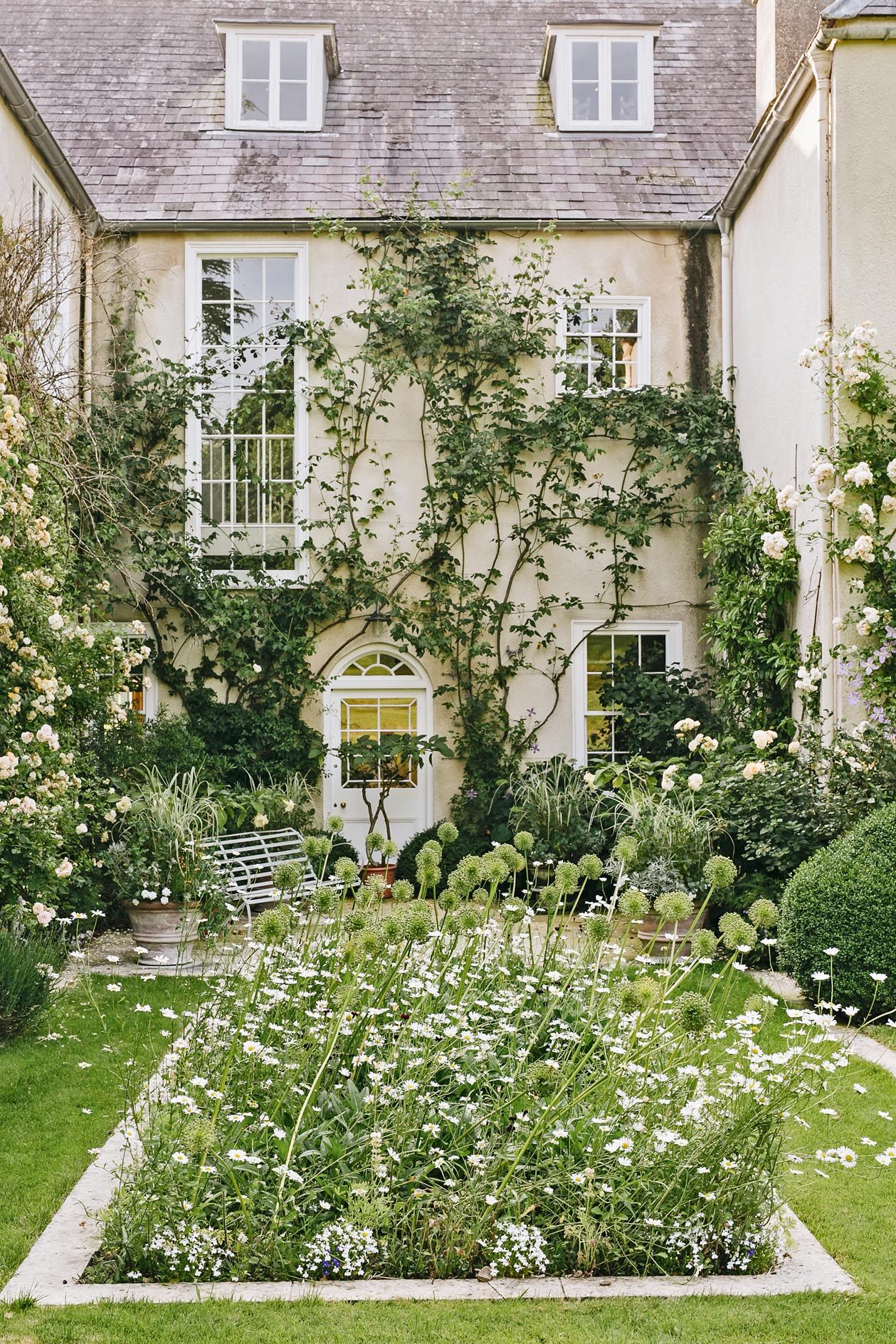
Their search eventually led them to Somerset, to a Georgian rectory built onto a 17th century farmhouse with about 100 acres in the village of Batcombe.
‘Before showing us the house, the vendor dropped us at the top of the land across the valley and suggested we walk back,’ says Mrs Russell.
‘We saw the fields buzzing with insects; the amazing wildflower meadows alive with bellflowers, ox-eye daisies and yellow rattle; the beautiful stream crossed by a bridge of Doulting stone — the stone used in Wells Cathedral. From the top of one of the hills, we saw the views straight across to Glastonbury Tor. Of course, by the time I’d got to the house, I’d fallen madly in love — it’s such a beautiful part of the world.’
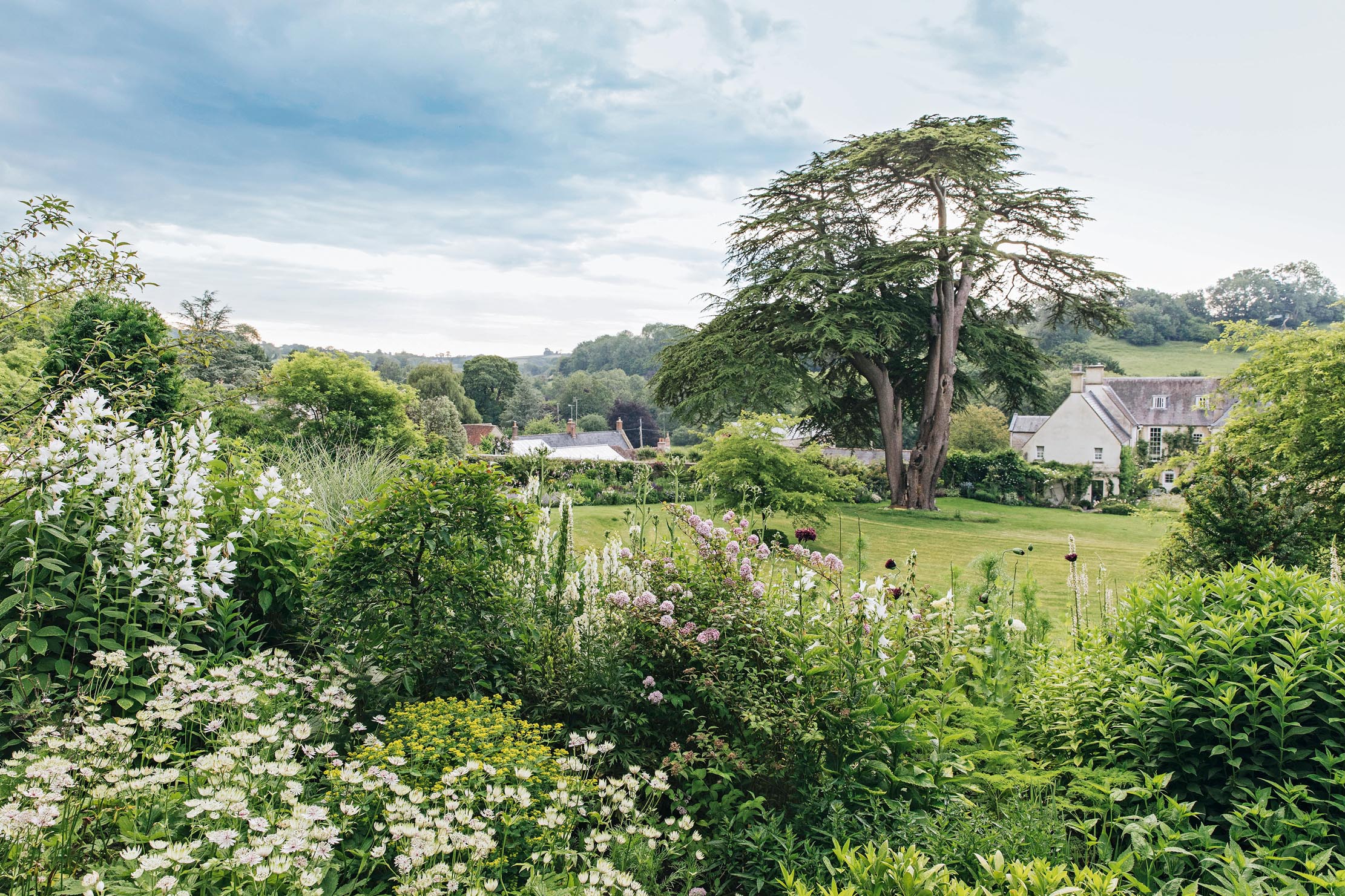
The sloping garden behind the house, when they finally reached it, had less to recommend it. Apart from an imposing cedar, ‘the Maserati of its day’, planted by the vicar in about 1785, there was a small area enclosed by a yew hedge and then ‘not much more than two asymmetric rectangles of lawn up a hill’.
Exquisite houses, the beauty of Nature, and how to get the most from your life, straight to your inbox.
Firm believers that ‘so long as the setting is right you can make a house and you can make a garden’, the Russells made an offer.
Believing that a good garden should feel as if it has always been there, Mrs Russell set about designing what she describes as an ‘essential Somerset garden’, complete with hoggin paths, wicker gates and local stone.
‘Somerset is not all lined up and perfect,’ she explains. ‘It’s rolling and soft with winding roads and quirky charm. I wanted something that had that atmosphere and which spoke to the landscape around it — connecting the garden to the other side of the valley, to the wildflowers in the fields and to the striations in the limestone hills made by centuries of grazing sheep.’
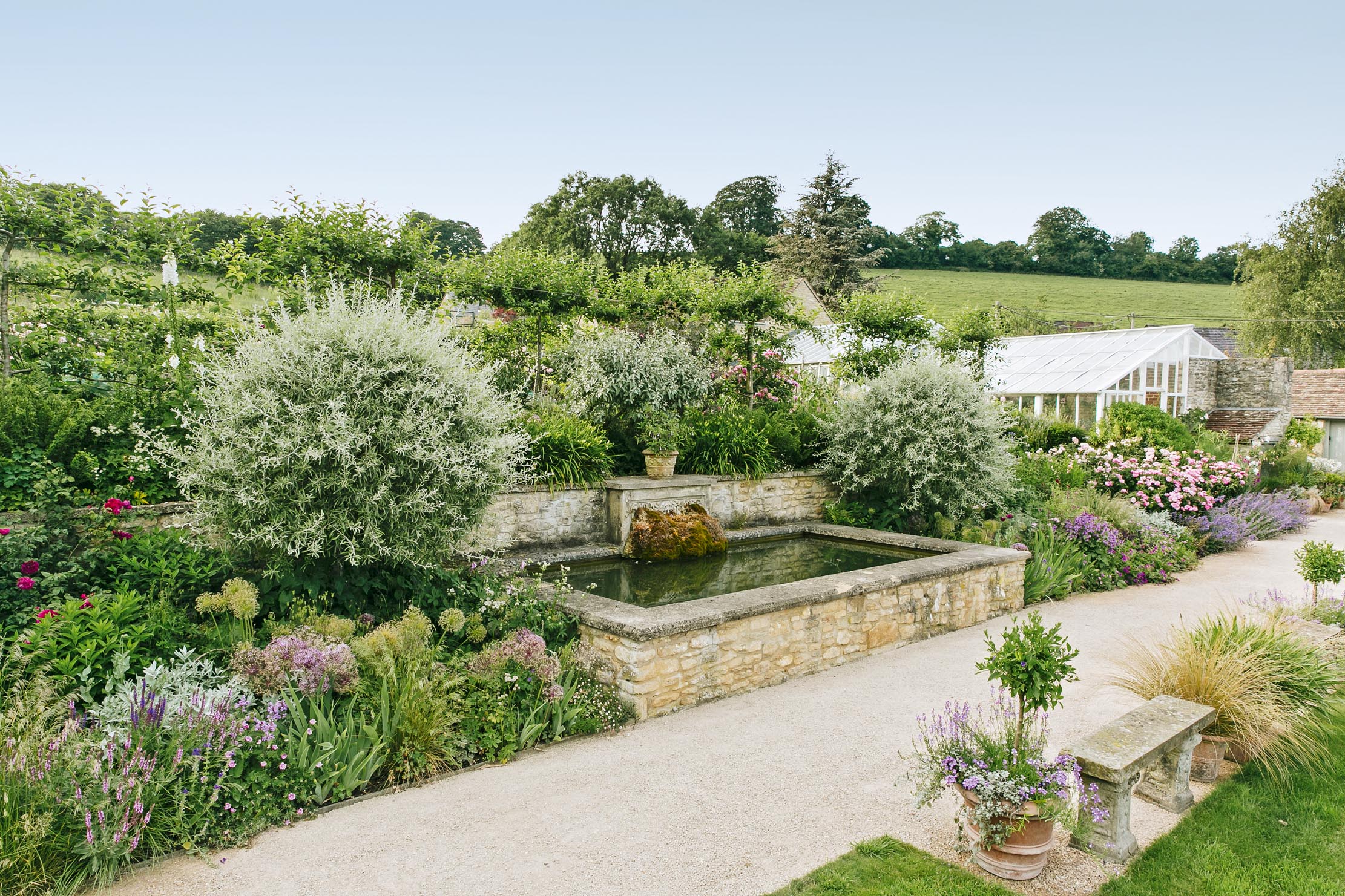
There was a huge amount of hardcore to be removed — Nissen huts had been built on the land for the Americans stationed here during the Second World War. An unexploded shell was found when preparing the top borders and the bomb-disposal unit had to be called.
The listed cedar restricted the siting of retaining walls. But most testing were the wildly differing levels and, of course, the drainage they demanded. ‘The whole garden has been an exercise in how you go up a hill and the different ways you can do it,’ she explains.
Her solution has been two-fold. On one side of the garden, she has built a series of gently curving grass banks that both echo the contours of the landscape beyond and act as a visual trick, shifting the axis to make the house feel centred in the space, ‘which it absolutely isn’t,’ she laughs.

On the other, she has opted for steps and a succession of terraces, starting with a herb garden outside the kitchen (a long-held dream) and gradually revealing a kitchen garden, a swimming pool, tennis court and an orchard laced with wildflowers.
Both sides have been designed to indulge Mrs Russell’s passion for plants (she is a long- standing member of the RHS Herbaceous Plant Committee), albeit in markedly different ways. The amphitheatre garden erupts with major displays, or ‘whammies’, every six weeks or so, ranging from magnolias and narcissi in spring, through to asters and grasses in autumn, whereas the terraced garden is managed more intensively.
Here, deep borders burst with generous plantings of Rosa ‘Mundi’, Nepeta ‘Six Hills Giant’, Papaver somniferum‘Lauren’s Grape’ and artemisia. There are beds displaying a more delicate Pointillist style, where digitalis and stachys mix with astrantia and agastache against a backdrop of pyramid yews.
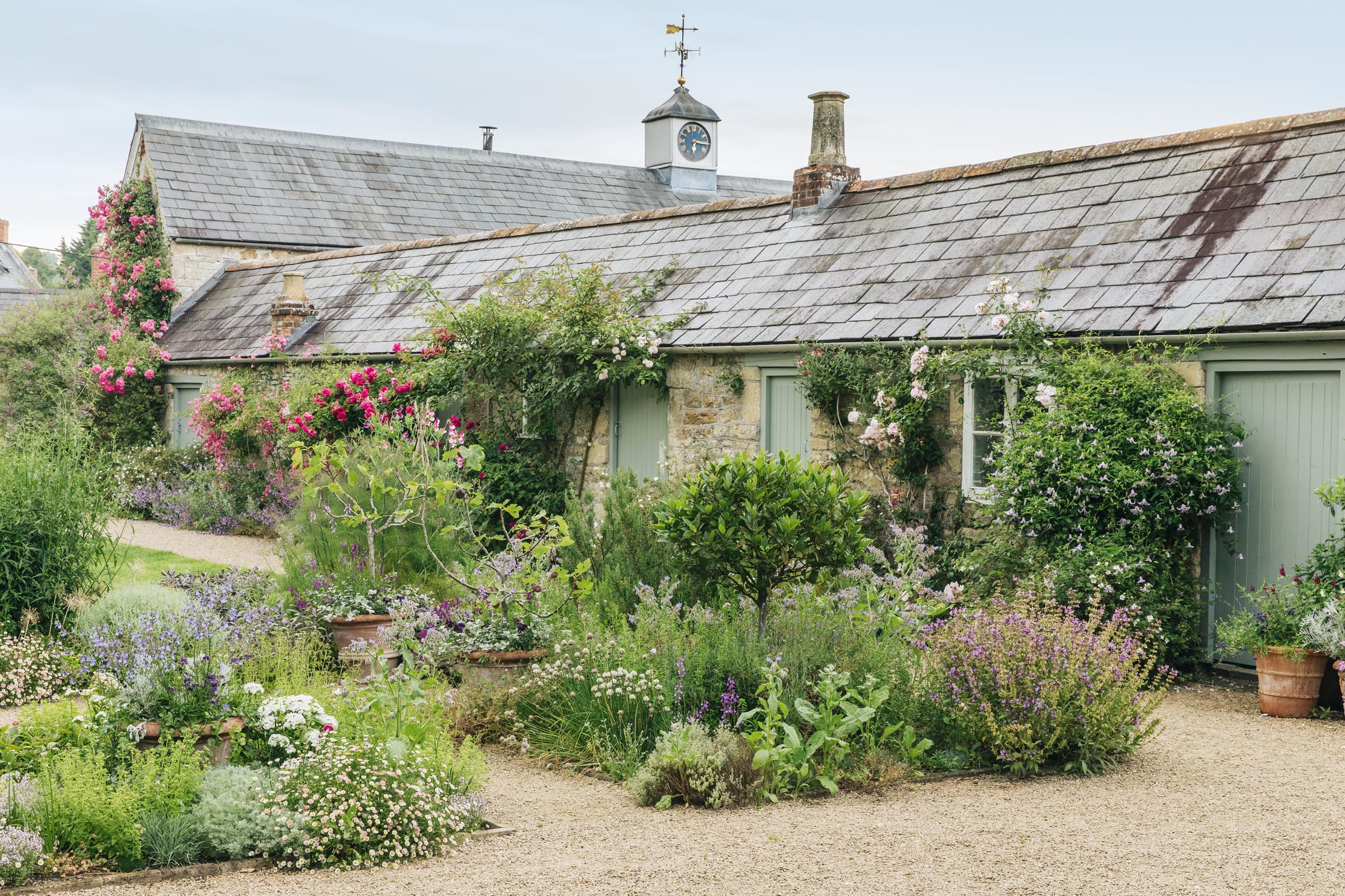
A long espalier of apples (Malus toringo, a species she loves for its blossom and the deep-red, long-lived apples) leads through to the vegetable garden, where the patterned beds vie for attention with goblet-trained pears, cordons of currants, wigwams of sweet peas and a hazel tunnel smothered in gourds, borlotti beans or cobaea. ‘That’s how I like to design,’ she reveals. ‘I like a strong structure and then I let the plants go mad.’
Partly because the garden is open for charity and tours, it is designed to have a long season of interest. Helped by head gardener Tom Price and assistant gardener Sue McCardle, greenhouse-grown annuals and biennials are added to the displays, with dahlias and salvias parachuted in and out of the borders as the year progresses. ‘We’re always trying to find plants that are “good doers”,’ Mrs Russell adds, ‘particularly as I’m often away with work.’
Roses, of which the garden has an embarrassment, have proved such a plant — from ‘Climber Madame Caroline Testout’ (‘properly up to a big façade’) or rambler ‘Ghislaine de Féligonde’ to shrub roses ‘Felicia’ and ‘Buff Beauty’ in the borders.
‘I love plants that are happy in a place and roses do well here. They love the soil, they like the sun and they do give you that amazing oomph, that first celebration of summer.’
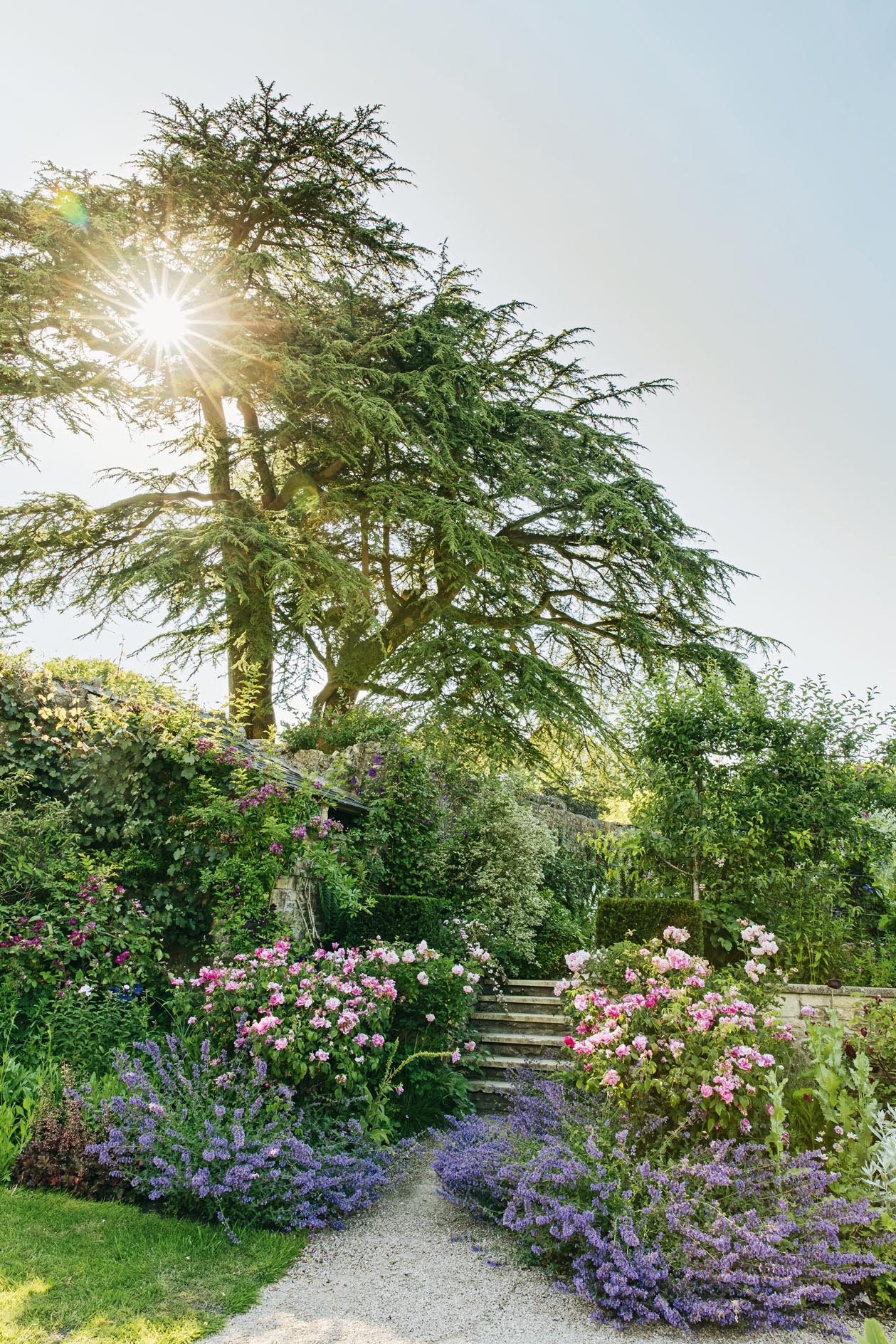
Whichever plants she chooses, Mrs Russell is keen that they work with the relaxed, natural atmosphere of the garden. That could mean wildflowers themselves, such as ox-eye daisies and devil’s bit scabious — used to great effect in the beautiful grass-framed plat to one side of the kitchen.
Or it could mean finding cultivars that have the feel of wild plants, but which perform better: umbellifers such as ammi or orlaya, redolent of clouds of cow parsley, or the beautiful Rosa ‘Lyda Rose’. ‘That’s wonderful with ox-eye daisies,’ says Mrs Russell. ‘It looks like the best wild briar rose, but is in fact a repeat-flowering shrub rose. There’s a harmony there, an ease, and one that I hope is true to the essence of this place.’
For opening hours, visit www.ngs.org.uk
Country Life is unlike any other magazine: the only glossy weekly on the newsstand and the only magazine that has been guest-edited by His Majesty The King not once, but twice. It is a celebration of modern rural life and all its diverse joys and pleasures — that was first published in Queen Victoria's Diamond Jubilee year. Our eclectic mixture of witty and informative content — from the most up-to-date property news and commentary and a coveted glimpse inside some of the UK's best houses and gardens, to gardening, the arts and interior design, written by experts in their field — still cannot be found in print or online, anywhere else.
